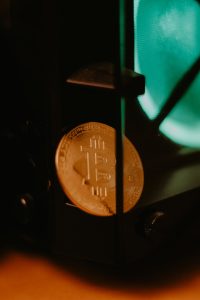Forex consolidation is a term used to describe a period of time when the market is moving sideways, and the price of a currency pair is trading in a range. During consolidation, the price of a currency pair stays within a specific range, and traders find it difficult to make a profit from trading. Understanding how to detect forex consolidation is essential for traders to identify potential trading opportunities and avoid making unprofitable trades. In this article, we will discuss how to detect forex consolidation and the tools traders can use to identify consolidation patterns.
What is Forex Consolidation?
Forex consolidation occurs when the price of a currency pair is trading in a range, and the market is not showing any clear trend. During consolidation, the price of the currency pair moves up and down within a specific range, and traders find it difficult to make a profit from trading. The price movement during consolidation is generally small, and traders need to be patient to identify potential trading opportunities. Forex consolidation can last for hours, days, or even weeks, and it can be frustrating for traders who are looking for opportunities to make a profit from trading.
How to Detect Forex Consolidation?
Detecting forex consolidation is not always easy, but there are a few key indicators that traders can use to identify consolidation patterns. Here are some of the tools traders can use to detect forex consolidation:
1. Price Action Analysis
Price action analysis is one of the most effective ways to detect forex consolidation. Traders can use price action analysis to identify consolidation patterns by looking at the price movement of a currency pair. During consolidation, the price of a currency pair moves up and down within a specific range, and traders can use price action analysis to identify support and resistance levels. Traders can then use these levels to enter and exit trades.
2. Moving Averages
Moving averages are technical indicators that traders can use to identify forex consolidation. During consolidation, the price of a currency pair moves up and down within a specific range, and moving averages can help traders identify the range. Traders can use moving averages to identify support and resistance levels, and they can then use these levels to enter and exit trades.
3. Bollinger Bands
Bollinger Bands are technical indicators that traders can use to identify forex consolidation. Bollinger Bands consist of a simple moving average and two standard deviations, and they can help traders identify the range of a currency pair. During consolidation, the price of a currency pair moves up and down within a specific range, and Bollinger Bands can help traders identify support and resistance levels. Traders can then use these levels to enter and exit trades.
4. Relative Strength Index
Relative Strength Index (RSI) is a technical indicator that traders can use to identify forex consolidation. RSI measures the strength of a currency pair and can help traders identify whether the market is in a consolidation phase. During consolidation, the RSI will generally be in the middle of the range, indicating that the market is not showing any clear trend.
Conclusion
Forex consolidation is a period when the market is moving sideways, and the price of a currency pair is trading in a range. Detecting forex consolidation is essential for traders to identify potential trading opportunities and avoid making unprofitable trades. Traders can use different tools to detect forex consolidation, including price action analysis, moving averages, Bollinger Bands, and RSI. By using these tools, traders can identify the range of a currency pair and use this information to enter and exit trades.





